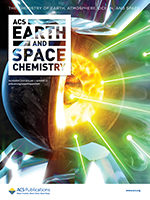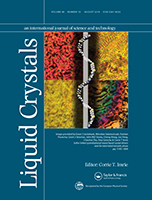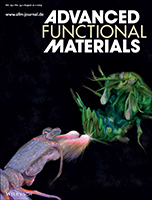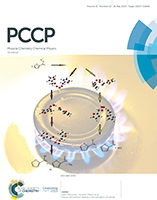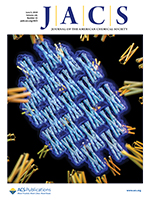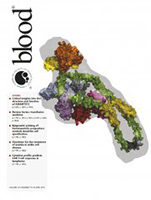KRASG12C has emerged as a promising target in the treatment of solid tumors; however, clinically viable inhibitors have yet to be identified. Here, researchers report on structure-based design and optimization efforts, culminating in the identification of AMG 510, a highly potent, selective, and well-tolerated KRASG12C inhibitor currently in phase I clinical trials (NCT03600883). Read more »
Journal Covers
A High-Pressure Compound of Argon and Nickel: Noble Gas in the Earth’s Core?
Researchers demonstrated the synthesis of a thermodynamically stable compound of Ar and Ni at thermodynamic conditions representative of the Earth’s core. The results suggest that the abundance of Ar in the Earth’s core is beyond a simple solubility of Ar in molten Ni–Fe but in chemical reactions in nature. Read more »
Chemical and Morphological Origins of Improved Ion Conductivity in Perfluoro Ionene Chain Extended Ionomers
Resonant x-ray scattering and x-ray absorption spectroscopy with elemental sensitivity unravel structural features tied to water–ion domains and discern sulfur-containing groups in sulfonated ionomers, which help delineate chemical factors controlling their phase-separated morphology and governing ion transport. Read more »
Sulfur-linked cyanobiphenyl-based liquid crystal dimers and the twist-bend nematic phase
The synthesis and characterization of cyanobiphenyl-based liquid crystal dimers containing sulfur links between the spacer and mesogenic units are described. Resonant x-ray scattering studies of the twist-bend nematic phase at both the carbon and sulfur absorption edges were performed to determine the critical behaviour of the helical pitch at the transition to the nematic phase. Read more »
Shape transformation and self-alignment of Fe-based nanoparticles
Magnetic nanoparticles (MNPs) have widespread applications in biotechnology, materials science, engineering, and environmental studies. Thus, much attention has been paid to their controllable synthesis. Three new functions of iron-based nanoparticles are reported: shape transformation, oxidation prevention, and self-alignment. Read more »
The Stomatopod Telson: Convergent Evolution in the Development of a Biological Shield
In this article, researchers identify multiscale structure‐mechanical property relationships within the shield-like exoskeletal telson structure of the mantis shrimp, used for defense and protection. Comparison of telsons from two evolutionarily divergent species reveal differences in macromorphology, cuticle thickness, and mineralization, imparting compressive stiffness as well as compliance for energy absorption. Read more »
Heliconical-layered nanocylinders (HLNCs) – hierarchical self-assembly in a unique B4 phase liquid crystal morphology
Morphology is of critical importance for molecular crystals, drug molecules, alloys, and elements in the periodic table. We here demonstrate how very subtle structural changes in a set of bent-core liquid crystals lead to rather complex hierarchical superstructures driven by changes in molecular conformation. Read more »
Peroxy self-reaction leading to the formation of furfural
Furan and its alkyl derivatives, such as methylfuran (2MF), have been identified as valid alternative biofuels. This study focuses on the self-reaction of the peroxy radical generated in the first oxidation step of 2MF. The mass spectrometry data reveal that furfural is the dominant product of 2MF oxidation. Various reaction mechanisms for furfural formation are proposed here. Read more »
Self-Assembling 2D Arrays with de Novo Protein Building Blocks
Modular self-assembly of biomolecules in two dimensions (2D) is straightforward with DNA but has been difficult to realize with proteins, due to the lack of modular specificity similar to Watson–Crick base pairing. Here, researchers describe a general approach to designing 2D arrays using de novo designed pseudosymmetric protein building blocks. Read more »
Exploring the “minimal” structure of a functional ADAMTS13 by mutagenesis and small-angle X-ray scattering
Researchers used the SIBYLS beamline to gain insight into ADAMTS13, the only known protein to regulate the adhesive function of von Willebrand factor (VWF), a blood-clotting protein. When VWF is deficient or abnormal, it causes a common inherited bleeding disorder, von Willebrand disease. VWF is also implicated in arterial and deep-vein thrombosis, stroke, atherosclerosis, sickle cell crisis, and sepsis. Read more »
- « Previous Page
- 1
- …
- 13
- 14
- 15
- 16
- 17
- …
- 21
- Next Page »

